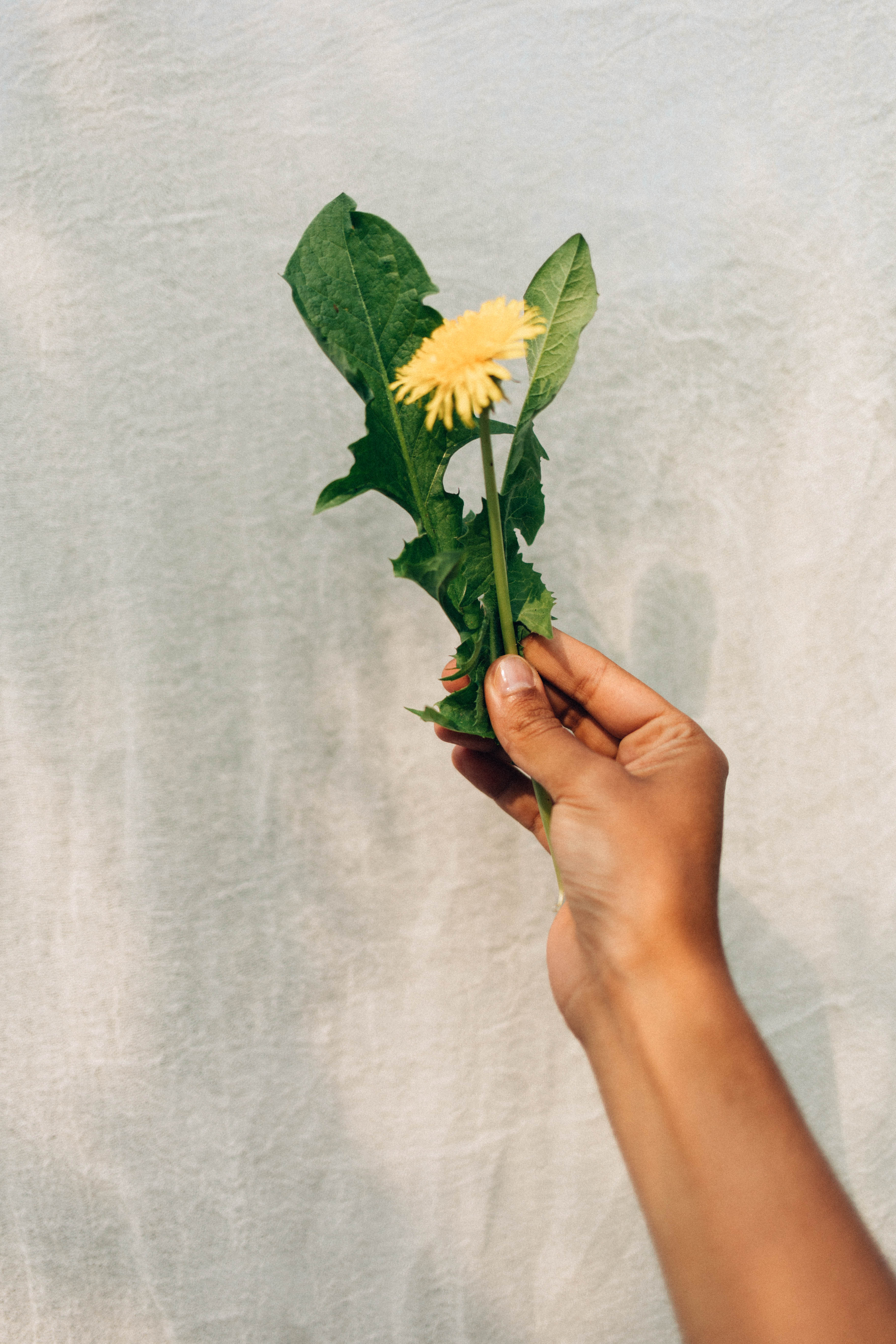Dandelion - menstruation-promoting, cleansing and clarifying

Dandelion Portrait
= Taraxum officinale
Most people know the dandelion as a bright yellow or fluffy, soft flower. Indestructible and easily surviving even the hottest summer heat, the plant requires little effort. This strength, resilience, and vitality of a plant can be passed on to us, if we only know enough about it.
Where do we find the dandelion?
Dandelion is native primarily to the Northern Hemisphere. This undemanding wild plant thrives best in sunny and partially shaded areas. It thrives in green meadows, but also along pathsides, roads, and concrete cracks, but can also thrive in damp and wet locations.
When can dandelions be collected?
Dandelions bloom bright yellow, usually from March to May, which is also generally the best time to harvest. The spring roots of the plant contain the most healthy bitter compounds. In late summer, the levels of inulin and taraxin increase. These active ingredients from the plant's roots are particularly important for making dandelion tea, dandelion syrup, or dandelion juice.
What is the name we use for dandelion?
Other popular names for dandelions include milk thistle, cow thistle, dandelion, egg thistle and monk's head.
How do we recognize dandelions?
Dandelions always look slightly different depending on their environment and adapt extremely well to diverse conditions. This perennial herbaceous plant grows between 10 and 30 centimeters tall. The hollow, round stem of the dandelion is unbranched and leafless. The leaves, in a dense rosette, can grow up to 25 centimeters long and are distinctively toothed. The dark-brown taproot, like the rest of the plant, also contains the white, milky sap. The sap is not poisonous, but can only stain skin or fabrics brownish-yellow.
What special features does the dandelion offer us?
Like ground elder, dandelion provides us with the most nutrients in spring. The bitter compounds, which have a positive effect on our digestive tract, are particularly special. Experience has shown that dandelion stimulates the metabolism, is cleansing, and energizing, providing us with important, healthy active ingredients.
Main components that we extract from dandelions?
Dandelion contains insulin, sesquiterpene lactones, triterpenes, steroids, flavonoids, various vitamins, amino acids and carbohydrates.
Dandelion and Premenstrual Syndrome (PMS)
Dandelion, rich in bitter compounds and other healthy ingredients, can play a supportive role in relieving premenstrual symptoms (PMS). The bitter compounds in dandelion stimulate digestion and support liver function, which can help balance hormonal imbalances during premenstrual syndrome. Dandelion leaves also contain a variety of vitamins and minerals that can help strengthen the body during this time and compensate for potential deficiencies.
Suitable for both halves of the cycle
Dandelion is suitable for both phases of the female cycle, as it is available year-round and addresses different health needs. During the first half of the cycle, the follicular phase, dandelion can help stimulate metabolism and support the body's cleansing functions. During the second half of the cycle, the luteal phase, when many women experience PMS symptoms, dandelion's anti-inflammatory and metabolism-stimulating properties can help relieve symptoms and promote overall well-being.
Dandelion for lack of bleeding
In addition to its role in relieving PMS, dandelion may also help promote menstrual bleeding when it's absent or irregular. The bitter compounds in dandelion can increase blood flow and stimulate the uterine muscles, which may contribute to normal menstruation.
The Cosmos and the Dandelion
The dandelion, one of the most resilient and adaptable plants, symbolizes strength, vitality, and regeneration. Its ability to grow and thrive under diverse conditions is reflected in its ability to provide us humans with strength and endurance. In mythology, the dandelion is often associated with the sun, as it orients itself toward the sun during the day and absorbs its energy. This connection to the sun and its ability to absorb light and energy make the dandelion a symbol of vitality and optimism.







Comments